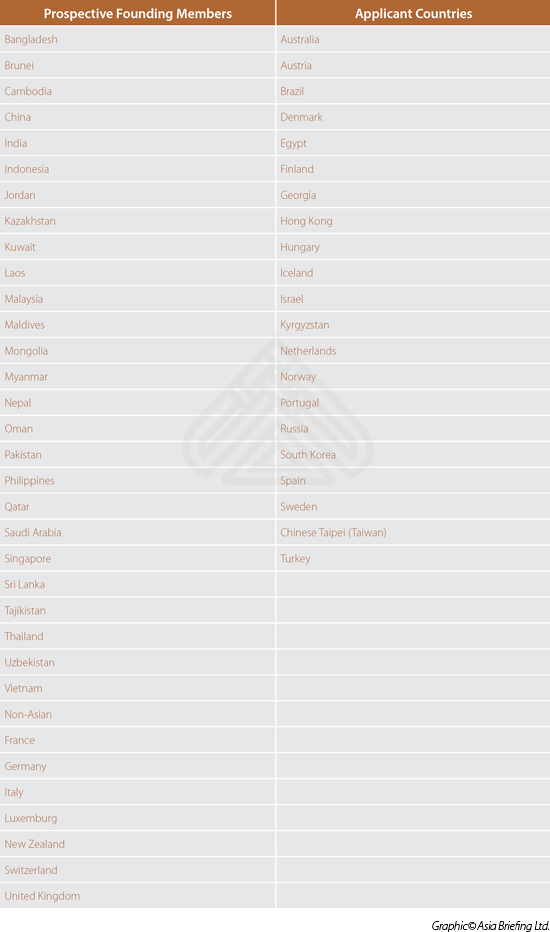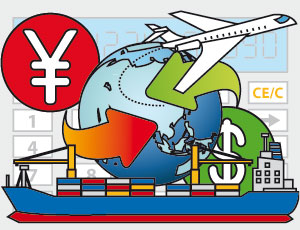March 31 2015 was the deadline for countries to join the Asia Infrastructure Investment Bank. This cut-off date was met with a rush of last minute applications from countries around the world.
The Asian Infrastructure Investment Bank (AIIB) was first proposed when Xi Jinping and Li Keqiang visited Southeast Asian countries in October 2013. The AIIB will finance infrastructure projects throughout Asia, such as roads, railways and ports.
By October 2014, 22 Asian states had signed a Memorandum of Understanding to establish the AIIB. The bank is to be headquartered in Beijing and is widely seen as China’s answer to the Japanese-led Asian Development Bank and the American-dominated World Bank.
![]() RELATED: New Opportunities for Dutch SMEs as Netherlands Joins AIIB
RELATED: New Opportunities for Dutch SMEs as Netherlands Joins AIIB
The Chinese government had long been dissatisfied with Japanese and American reluctance to grant it a larger say in existing international financial institutions. For instance, China contributed 12.6 percent to global GDP, with 23 percent by the US and 6.7 percent by Japan. However, Japan is the majority shareholder of the Asian Development Bank with 15.7 percent of shares, followed by the US with 15.6 percent. China only holds 5.5 percent. The same situation occurs with in the World Bank. The institution is led by the US with 16 percent of shares, followed by Japan with 8.9 percent, and China merely holding 5.8 percent. At the same time, the US is unwilling to give China a bigger say in the IMF.
New Development Bank
It should therefore come as no surprise that China is now moving to establish its own international and multilateral institutions. On July 15, 2014 China founded the New Development Bank, another multilateral financial institution with the 5 BRICS countries (Brazil, Russia, India, China and South Africa) as member states. The New Development Bank is to be headquartered in Shanghai and like the AIIB, will focus on infrastructure projects. It will also feature a regional headquarters for African projects, based in South Africa.
One Road, One Belt
As said, the aim of the AIIB is to finance infrastructure projects throughout Asia. It is a practical application of Xi Jinping’s One Road, One Belt vision, in which he intends to recreate the historic Silk Road that connected China to the Mediterranean, the Middle East and Western Europe, passing through Central Asia.
![]() RELATED: China’s Proposed New Silk Road Free Trade Area
RELATED: China’s Proposed New Silk Road Free Trade Area
Improved infrastructure will create new and strengthen existing trade routes throughout the region. The projects will stimulate growth in the countries along the proposed New Silk Road, so that combined with better connectivity; these regions will become markets for Chinese goods. In the short term, the projects themselves are an appealing investment alternative for the Chinese government. With the US and EU economies weakening, China feels the need to diversify its investments.
In addition, the enhanced engagement with the region that the AIIB investments will entail will enable China to improve its relations with the countries in the region.
Membership
The chart below shows the countries who have been approved as Founding Members, as well as those who have submitted their application within the deadline. The United States, Canada and Japan have decided not to join. North Korea’s application was turned down.

Capitalization
Both the AIIB and the New Development Bank will have an initial capital of US$ 50 billion and both are planned to increase to US$ 100 billion. With a combined capital of US$200 billion, the two institutions could quickly develop into serious competitors of both the Asian Development Bank (subscribed capital of US$ 165 billion) and the World Bank (subscribed capital of US$223 billion).
|
Asia Briefing Ltd. is a subsidiary of Dezan Shira & Associates. Dezan Shira is a specialist foreign direct investment practice, providing corporate establishment, business advisory, tax advisory and compliance, accounting, payroll, due diligence and financial review services to multinationals investing in China, Hong Kong, India, Vietnam, Singapore and the rest of ASEAN. For further information, please email china@dezshira.com or visit www.dezshira.com. Stay up to date with the latest business and investment trends in Asia by subscribing to our complimentary update service featuring news, commentary and regulatory insight. |
![]()
Using China’s Free Trade & Double Tax Agreements
In this issue of China Briefing, we examine the role of Free Trade Agreements and the various regional blocs that China is either a member of or considering becoming so, as well as how these can be of significance to your China business. We also examine the role of Double Tax Treaties, provide a list of active agreements, and explain how to obtain the tax minimization benefits on offer.
HR Administration: Labor Contracts, Visas and Termination Procedures
In this issue of Asia Briefing, we set out to provide readers with a basic understanding of how to navigate the HR procedures of China, India and Vietnam. We begin by introducing the most common employment contract structures in each of these countries, as well as their laws for employment probation. We then take a look at the three’s increasingly complex procedures for obtaining work/business visas, and conclude with a special feature on how to legally terminate an employee across Asia.
The 2015 Asia Tax Comparator
In this issue, we compare and contrast the most relevant tax laws applicable for businesses with a presence in Asia. We analyze the different tax rates of 13 jurisdictions in the region, including India, China, Hong Kong, and the 10 member states of ASEAN. We also take a look at some of the most important compliance issues that businesses should be aware of, and conclude by discussing some of the most important tax and finance concerns companies will face when entering Asia.


 By
By 

